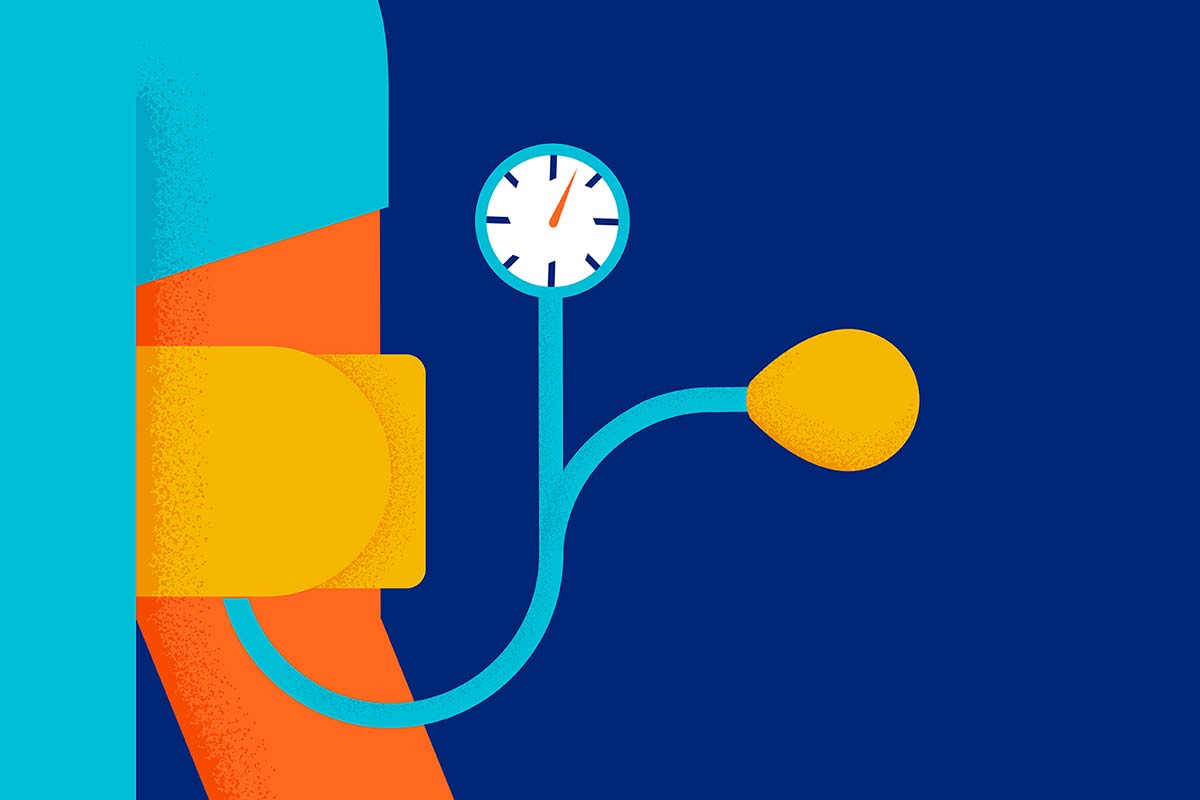

During your annual wellness visit to your primary care doctor, the staff usually checks your blood pressure. But is that enough? Consider this: according to the Centers for Disease Control and Prevention, someone in the United States dies of heart disease every 34 seconds. That’s about 697,000 people every year, or 1 out of every 5 deaths. And according to Jaime Murillo, M.D., senior vice president and chief cardiometabolic health officer at UnitedHealth Group, checking your blood pressure frequently can alert you (and your family members) to the onset of hypertension, thus allowing you to receive treatment and prevent serious complications. “We call hypertension, or high blood pressure, the No. 1 silent killer,” says Dr. Murillo. “It can take years to feel the effects of high blood pressure in your body, and by the time you do, it can already have done damage to your heart, brain, kidneys and arteries. We know that 48% of people in the United States have high blood pressure, which means your chance of having it is about 1 in 2. And that is just the cases we know about.” A study Dr. Murillo recently completed in Detroit bears out these statistics. His team went to churches, grocery stores and other spots throughout the city and selected people at random to screen them for elevated blood pressure. Their findings? Almost 60% of the people they tested had uncontrolled hypertension (blood pressures above 140/90). While the number seems shocking, the outcome was good — Dr. Murillo and his team were able to help 88% of the participants control their blood pressure within 12 weeks. The key is knowing you have the condition. And the key to that is testing your blood pressure regularly at home.
You’ll see blood pressure monitors available at just about any pharmacy and many places online. But Dr. Murillo cautions that all blood pressure monitors aren’t created equal. “Testing of many commercially available monitors has shown their readings can vary widely, meaning you won’t get an accurate measure,” he says. He points to a partnership between the American Medical Association (AMA) and the National Opinion Research Center at the University of Chicago, which tested and validated home blood pressure monitors and posted their recommendations online. Find the best blood pressure monitors that meet AMA standards.
Tip: Does your health plan include a health savings account (HSA) or flexible spending account (FSA)? These accounts are designed to help you reduce your taxable income by putting money away for health care expenses, and you can use those funds to purchase an AMA-validated blood pressure monitor.
Bring the at-home blood pressure monitor you choose to your doctor’s office at least once a year so the staff can check it against their machines. That way, you’ll know you’re getting the right numbers.
Content is for general informational purposes only and not intended to be medical advice or a substitute for professional health care. See your physician for medical advice personalized to your situation. Consult your doctor prior to beginning an exercise program or making changes to your lifestyle or health care routine.
References to other web sites does not imply an endorsement of the material on the websites.